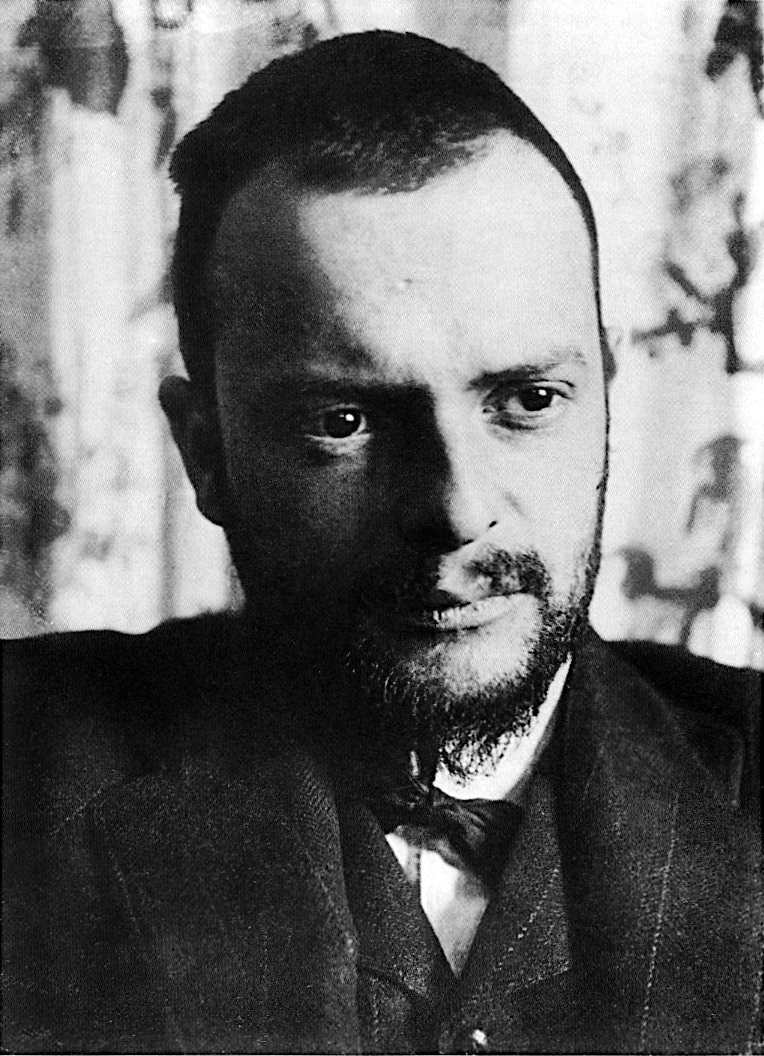Paul Klee citáty a výroky
Paul Klee: Citáty v angličtine
I.9 A The Natural organism of movement as kinetic will and kinetic execution (supra-material), p. 27
1921 - 1930, Pedagogical Sketch Book, (1925)
IIII.37, The Arrow. p. 54
1921 - 1930, Pedagogical Sketch Book, (1925)
I.13 Productive | Receptive, p. 33
1921 - 1930, Pedagogical Sketch Book, (1925)
Quote (1908), # 840, in The Diaries of Paul Klee, translation: Pierre B. Schneider, R. Y. Zachary and Max Knight; publisher, University of California Press, 1964
1903 - 1910
I.8 Material Structure. in Nature, p. 26
1921 - 1930, Pedagogical Sketch Book, (1925)
Statement of mid-1920'; as quoted in Abstract Art (1990) by Anna Moszynska, p. 100
1921 - 1930
Diary-note (Tunisia, 16 April 1914), # 926; as quoted by Suzanne Partsch in Klee (reissue), Benedikt Taschen, Cologne, 2007 - ISBN 978-3-8228-6361-9, p. 20
1911 - 1914, Diary-notes from Tunisia' (1914)
Quote (1904), # 512, in The Diaries of Paul Klee, translation: Pierre B. Schneider, R. Y. Zachary and Max Knight; publisher, University of California Press, 1964
1903 - 1910
world view
Quote (July 1917), # 1081, in The Diaries of Paul Klee, translation: Pierre B. Schneider, R. Y. Zachary and Max Knight; publisher, University of California Press, 1964
1916 - 1920
Quote (April 1912); as cited in Kandinsky and Klee in Tunisia, Roger Benjamin & Cristina Ashjian; Univ of California Press, 2015, p. 106
In April 1912 Paul Klee spent 16 days with his wife Lily in Paris. They visited the exhibtion of the 'Salon des Independants' of 1912, where works were shown of Delaunay, Seurat and many Cubist works
1911 - 1914
Quote (November 1897), # 52, in The Diaries of Paul Klee, translation: Pierre B. Schneider, R. Y. Zachary and Max Knight; publisher, University of California Press, 1964
reflecting on his youth and on the uncertainty about the future of choice to make
1895 - 1902
Quote (Bern, April 1902), as cited in Artists on Art, from the 14th – 20th centuries, ed. Robert Goldwater and Marco Treves; Pantheon Books, 1972, London, p. 442
1895 - 1902
note from a letter, 1903
Quote from a letter (1903), as cited in Artists on Art, from the 14th – 20th centuries, ed. Robert Goldwater and Marco Treves; Pantheon Books, 1972, London, p. 443
1903 - 1910
Quote (June 1902), as cited in Artists on Art, from the 14th – 20th centuries, ed. Robert Goldwater and Marco Treves; Pantheon Books, 1972, London, p. 442
1895 - 1902
Quote (1901), # 294, in The Diaries of Paul Klee, translation: Pierre B. Schneider, R. Y. Zachary and Max Knight; publisher, University of California Press, 1964
1895 - 1902
Quote (1908), # 840, in The Diaries of Paul Klee; University of California Press, 1964; as quoted by Francesco Mazzaferro, in 'The Diaries of Paul Klee - Part Three' : Klee as a Secessionist and a Neo-Impressionist Artist http://letteraturaartistica.blogspot.nl/2015/05/paul-klee-ev.html
1903 - 1910
IIII.37, The Arrow. p. 54
1921 - 1930, Pedagogical Sketch Book, (1925)
Diary entry (January 1912), # 905, quoting his "Munich Art Letter" in the journal Die Alpen
1911 - 1914
I.13 Productive | Receptive, p. 33
1921 - 1930, Pedagogical Sketch Book, (1925)
German original version: Diesseitig bin ich gar nicht fassbar. Denn ich wohne grad so gut bei den Toten, wie bei den Ungeborenen. Etwas näher dem Herzen der Schöpfung als üblich. Und noch lange nicht nahe genug.
Quote from Exhibition catalogue, Galerie Goltz, Munich, published in the gallery's house journal Der Ararat (May 1920). These words were later used as Klee's epitaph in 1940.
Variant translation: I cannot be understood at all on this earth. For I live as much with the dead as with the unborn. Somewhat closer to the heart of creation than usual. But not nearly close enough.
As quoted in Paul Klee: His Work and Thought (1991) by Marcel Franciscono, p. 5
1916 - 1920
“He [in general] has found his style, when he cannot do otherwise, i. e., cannot do something else.”
Diary entry (Munich, 1908), # 825, in The Diaries of Paul Klee, 1898-1918; University of California Press, 1968, p. 227
1903 - 1910
Quote (Tunisia, 16 April 1914), # 926, in: The Diaries of Paul Klee, 1898-1918, transl. Pierre B. Schneider, R.Y. Zachary and Max Knight; Berkeley and Los Angeles, University of California Press, 1964
1911 - 1914, Diary-notes from Tunisia' (1914)
Quote (1900), # 121, in The Diaries of Paul Klee, translation: Pierre B. Schneider, R. Y. Zachary and Max Knight; publisher, University of California Press, 1964
1895 - 1902
Section IV
1916 - 1920, Creative Credo (1920)
“The work as human action (genesis) is productive as well as receptive. It is continuity.”
I.13 Productive | Receptive, p. 33
1921 - 1930, Pedagogical Sketch Book, (1925)
IIII.37, The Arrow. p. 54
1921 - 1930, Pedagogical Sketch Book, (1925)
As quoted in the film Der Bauhaus, produced by TV-Rechte in Germany (1975)
Attributed from posthumous publications
Diary entry, (Tunisia, April 1914), # 926-k, in: The Diaries of Paul Klee, 1898-1918, transl. Pierre B. Schneider, R.Y. Zachary and Max Knight; Berkeley and Los Angeles, University of California Press, 1964
1911 - 1914, Diary-notes from Tunisia' (1914)
Quote in a letter to his wife Lily Klee, 1 February 1933; as quoted in 'Klee & Kandinsky', 2015 exhibition text, Lenbachhaus und Kunstbau Munich, 2015-2016 https://www.zpk.org/en/exhibitions/review_0/2015/klee-kandinsky-969.html
in the same year Paul Klee was fired by the Nazi's; they closed the Bauhaus; the family Klee emigrated to Switzerland
1931 -1940
Quote (1912), # 928, in The Diaries of Paul Klee, translation: Pierre B. Schneider, R. Y. Zachary and Max Knight; publisher, University of California Press, 1964
1911 - 1914
